Prohibition in the United States began on January 17, 1920, prompted by a social movement that believed alcohol was the source of societal problems. The production, distribution, and sale of alcohol were banned, although consumption was not prohibited at the federal level. Prohibition significantly contributed to the rise of illegal alcohol production and the growth of organized crime. Ultimately, it proved unsuccessful, partly because it caused losses in once-legal alcohol industries. On December 5, 1933, Prohibition in the U.S. was repealed with the adoption of the 21st Amendment to the Constitution.

-
Table of Contents
Why Prohibition Was Declared in the U.S.
The first voices calling for a ban on alcohol sales and consumption in the U.S. emerged in the 19th century. Among the loudest advocates was the Woman’s Christian Temperance Union. After 1900, the Anti-Saloon League became the primary coordinator of these efforts.
The main reasons for banning alcohol were largely agreed upon: it corrupted public morality, negatively affected health, fueled domestic violence, and impacted societal behavior. Prohibition advocates in the U.S. were nicknamed “drys.”
Opponents of Prohibition were known as “wets,” often members of wealthy Catholic and German Lutheran communities, supported by the brewing industry. These two groups frequently clashed publicly. However, the influence of the “wets” declined after 1917, when the United States entered World War I against Germany.
Between 1900 and 1915, the average American consumed an estimated 9.46 liters of pure alcohol annually, equivalent to approximately 13 alcoholic drinks per week. In 2022, the per capita alcohol consumption in the U.S. was only slightly lower.
-
When Prohibition Was Declared in the U.S. and How Long It Lasted
The regulation of alcohol production and sales began at the state level.
A significant turning point occurred on January 16, 1919, when 46 of the then 48 U.S. states ratified the 18th Amendment to the Constitution. To enforce this, the Volstead Act was passed, introduced by Andrew Volstead, a U.S. Representative from Minnesota. The act was approved by 68% of representatives in the House and 76% in the Senate.
The law came into effect a year later, on January 17, 1920, banning the production, import, transportation, and sale of most alcoholic beverages. Exceptions included distilled spirits for medical purposes, sacramental wine, and kosher wine used in religious ceremonies. For some, religious rituals provided a way to bypass the law and access alcohol.
Partial relaxation of Prohibition in the U.S. occurred on April 7, 1933, when the Cullen-Harrison Act signed by President Franklin Roosevelt allowed individual states to legalize the sale of beverages with an alcohol content of up to 3.2%.
Federal Prohibition in the U.S. officially ended on December 5, 1933, with the ratification of the 21st Amendment to the Constitution, which repealed the 18th Amendment. However, some states continued Prohibition.
The last U.S. state to prohibit the production and distribution of alcohol until 1966 was Mississippi.
-
Impacts of Prohibition in the U.S.
🕵 Rise of Organized Crime
Following the introduction of Prohibition in 1920, there was a sharp increase in organized crime, which shifted its focus to the illegal alcohol trade. One of the most infamous crime groups was the Chicago gang led by the son of Italian immigrants, Alphonse Gabriel Capone, better known as Al Capone.
Profits from the production and sale of alcohol on the black market ranged from tens to hundreds of millions of dollars annually. At the peak of its success, “bootlegging” brought in $100 million per year for Al Capone and his organization.
As a result, the financial and power status of criminal groups was significantly strengthened during Prohibition.
💸 Decrease in Tax Revenue
Before Prohibition, alcohol taxes were a significant source of revenue for federal and state budgets.
Between 1920 and 1933, the federal government lost $11 billion in tax revenue at the time’s value. Adjusted to 2025, this would amount to approximately $200,000,000,000. The lack of funding exacerbated fiscal issues, culminating in the Great Depression.
🍷 Changes in Alcohol Consumption
Shortly after Prohibition was enacted, alcohol consumption in the U.S. reportedly dropped by as much as 70%. Over the following years, consumption gradually increased and was only 30% below pre-1920 levels by 1933.
At the same time, there was a shift toward stronger distilled spirits, as their higher alcohol content and profit margin made them more lucrative than beer or wine for illegal transportation. Homemade, often low-quality alcohol also became a problem, leading to negative health effects for consumers.
🔫 Increase in Violent Crime
The expansion of the illegal alcohol trade also led to an increase in violent crimes. For example, between 1919 and 1933, the murder rate rose from 6.8 to 9.7 per 100,000 people. Along with the rise in homicides, armed robberies also became more frequent.
⚖️ Growing Skepticism About Prohibition’s Benefits
The growing power of criminal organizations and the loss of tax revenue gradually shifted public opinion. Both the public and politicians increasingly believed that the benefits of Prohibition did not outweigh its negative consequences.
This sentiment ultimately led to the adoption of the 21st Amendment in 1933, which marked the end of Prohibition in the U.S.
-
Fun Facts About Prohibition in the U.S.
🥃 Whiskey Sold as Medicine
The Volstead Act allowed alcohol distribution for religious purposes, and pharmacies were legally permitted to sell “medicinal whiskey.” Patients could buy one pint of hard liquor every 10 days with a doctor’s prescription. Whiskey was prescribed for various ailments, ranging from the flu to toothaches. During Prohibition, the Walgreens pharmacy chain grew from 20 to 500 locations.
🥂 Tens of Thousands of Speakeasies Operated in New York
Prohibition led to a significant rise in secret bars, known as “speakeasies.” To enter these hidden establishments, patrons needed to know a password, which changed regularly.
Estimates suggest there were 30,000 to 40,000 speakeasies operating in New York City alone. Ironically, many women, who were instrumental in advocating for Prohibition, were frequent visitors to these establishments.
Some businesses established during Prohibition still exist today. For example, you can visit the 21 Club and Landmark Tavern in New York City, or The Green Mill in Chicago.
🚢 Smuggling Rum by Sea
Some illegal alcohol shipments to the U.S. were smuggled via sea routes. A popular route was from Canada and the Caribbean, where fleets of cargo ships transported rum. By the late 1920s, “rum-running” was generating millions of dollars weekly for smugglers.
-
Photos from the Prohibition Era in the U.S.
Photos are from the archives of the Library of Congress and were taken between 1920 and 1933. You can view additional photos from this era online on their website. You can also browse historic photos of American cities.
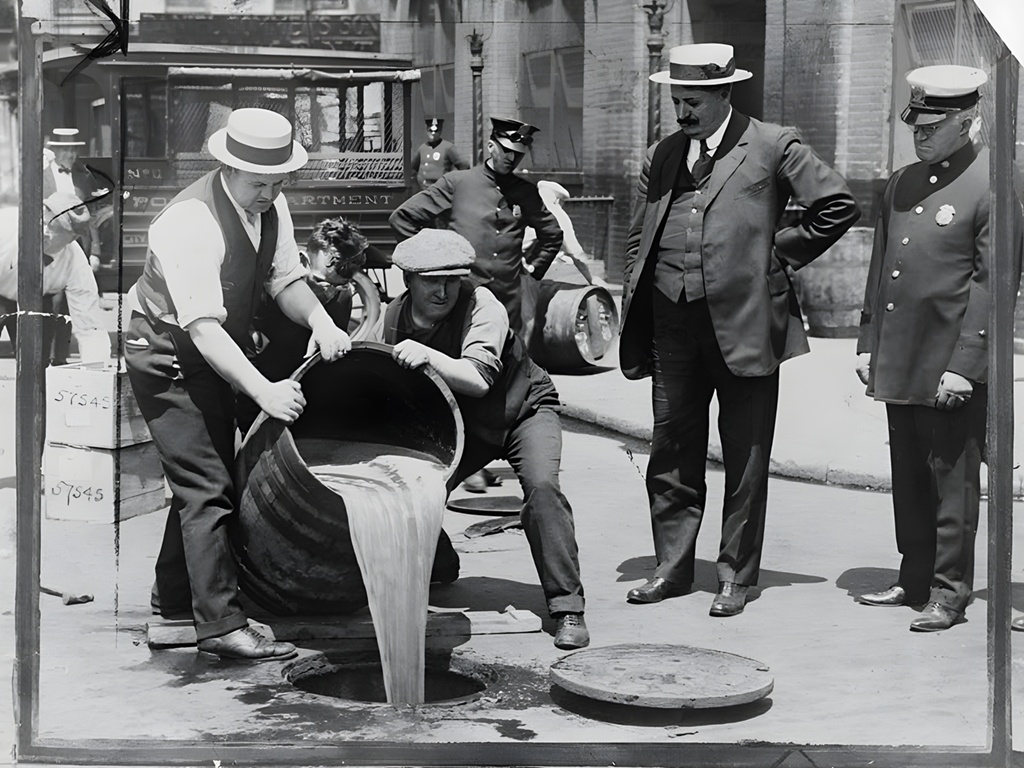
Deputy Police Commissioner John A. Leach (left) observes as agents pour seized alcohol into the sewer during the peak of Prohibition. This photo was taken around 1921 in New York City.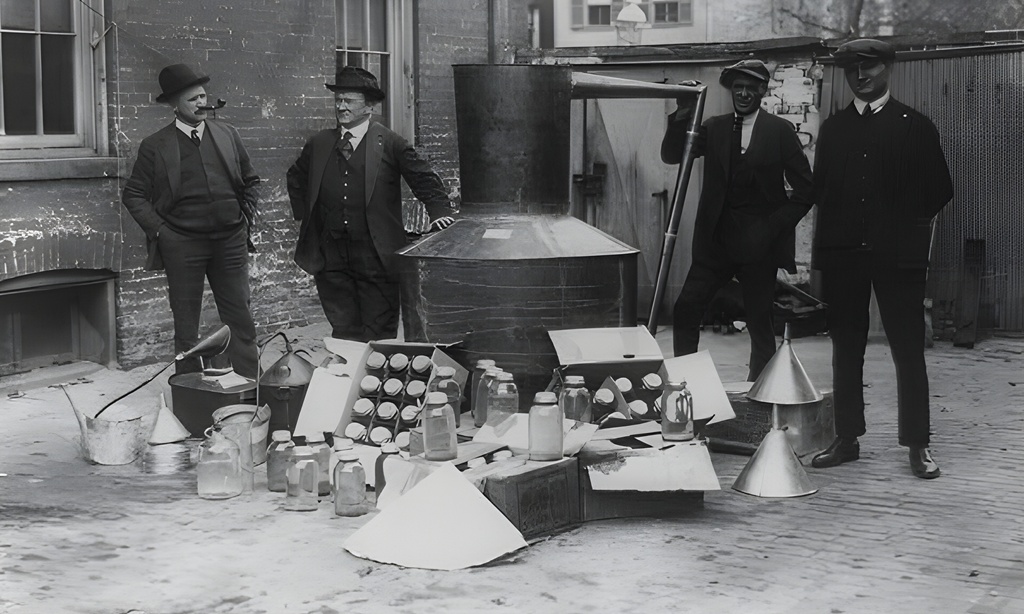
Lieutenant O. T. Davis, Sergeant J. D. McQuade, H. G. Bauer, and George Fowler from the Federal Revenue Bureau pose with a confiscated illegal distillery. This photo was taken on November 11, 1922, in Washington, D.C.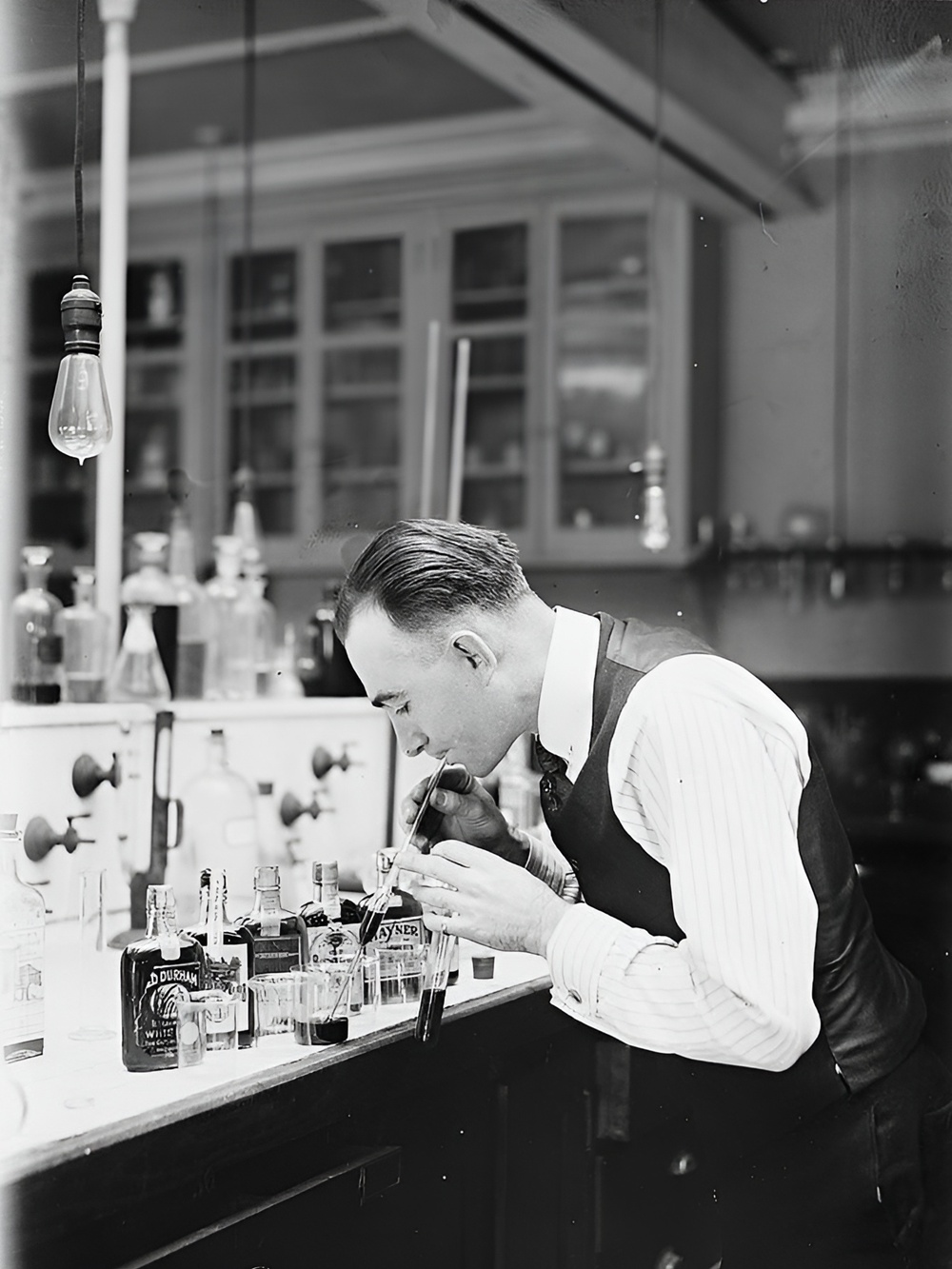
Chemist G. F. Beyer of the Revenue Bureau uses a pipette to sample smuggled whiskey for analysis. The photo was taken on January 14, 1920.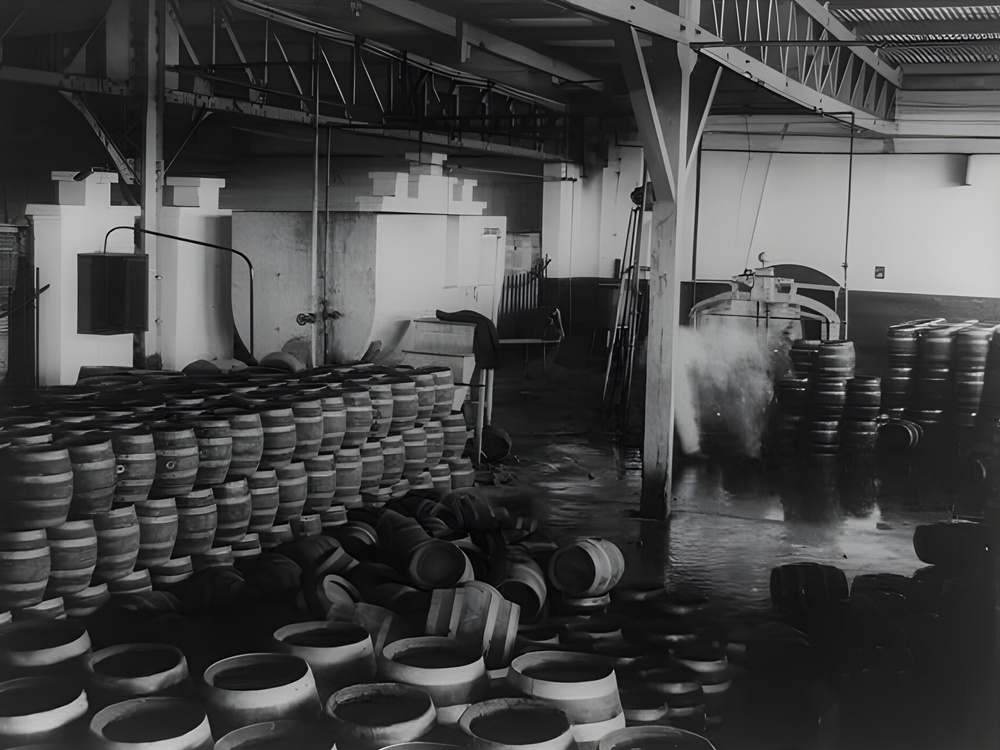
This photo shows barrels of what is likely seized alcohol stored in a warehouse. The date of the photo is unknown.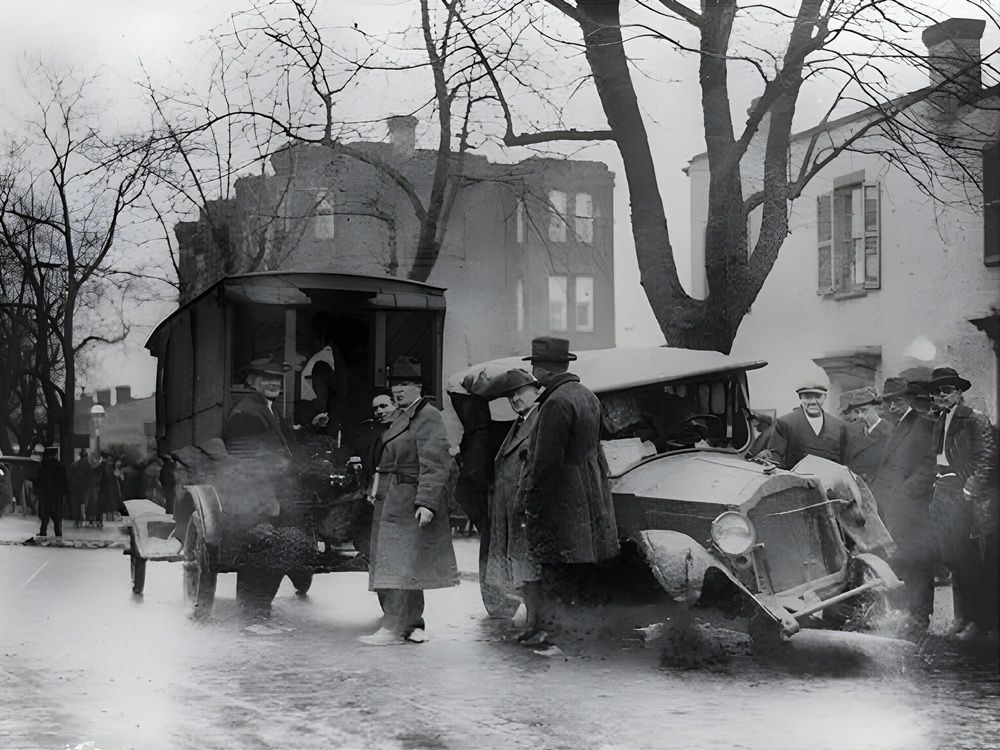
After an exciting car chase through the streets of Washington, D.C., police stopped two alcohol smugglers and their vehicle. This photo was taken on January 21, 1922.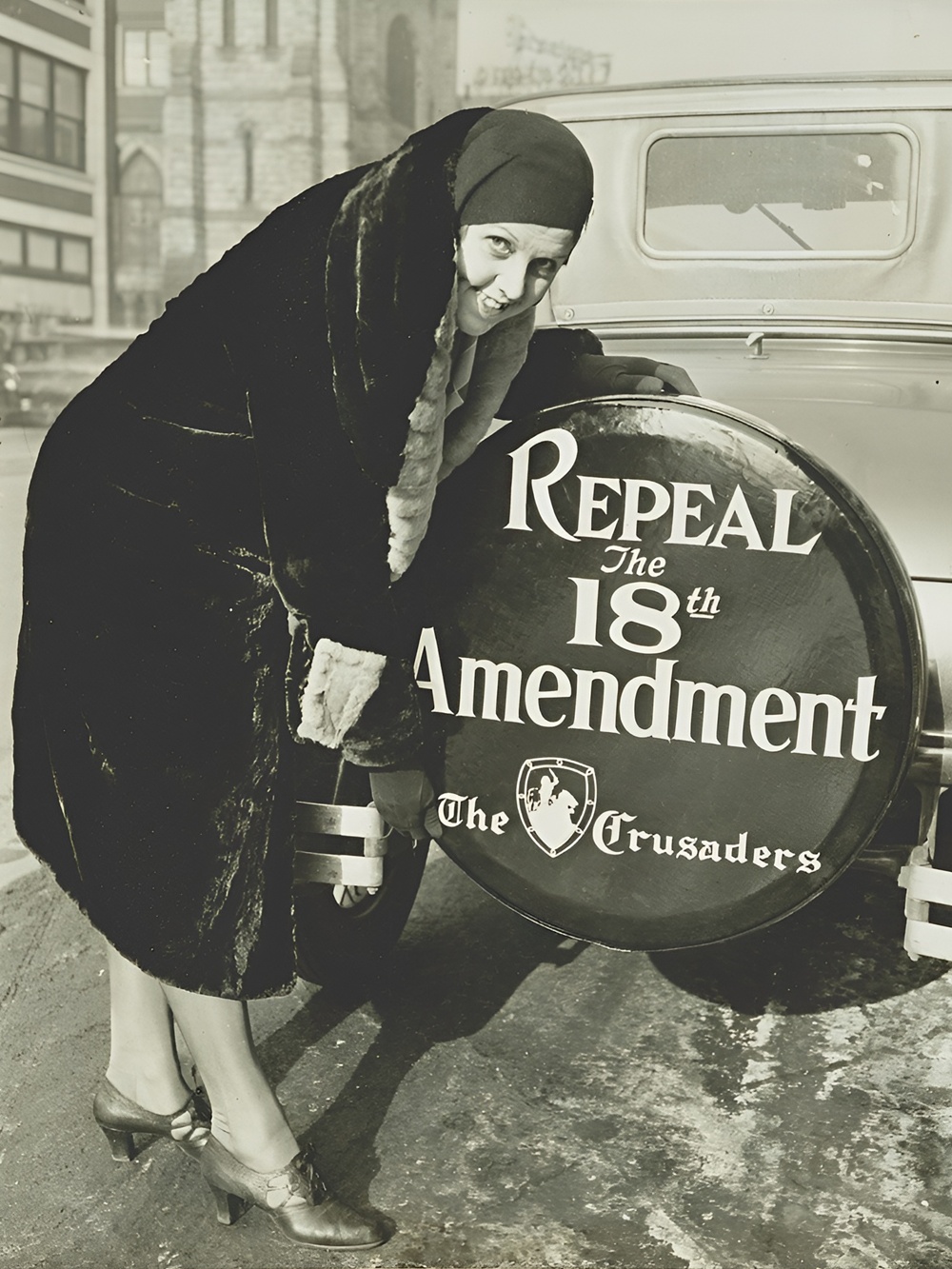
Miss Elizabeth Thompson, one of the first members of the national organization “The Crusaders,” which advocated for the end of Prohibition in the U.S., shows her opinion through a new tire cover. This photo was taken in Chicago on December 16, 1930.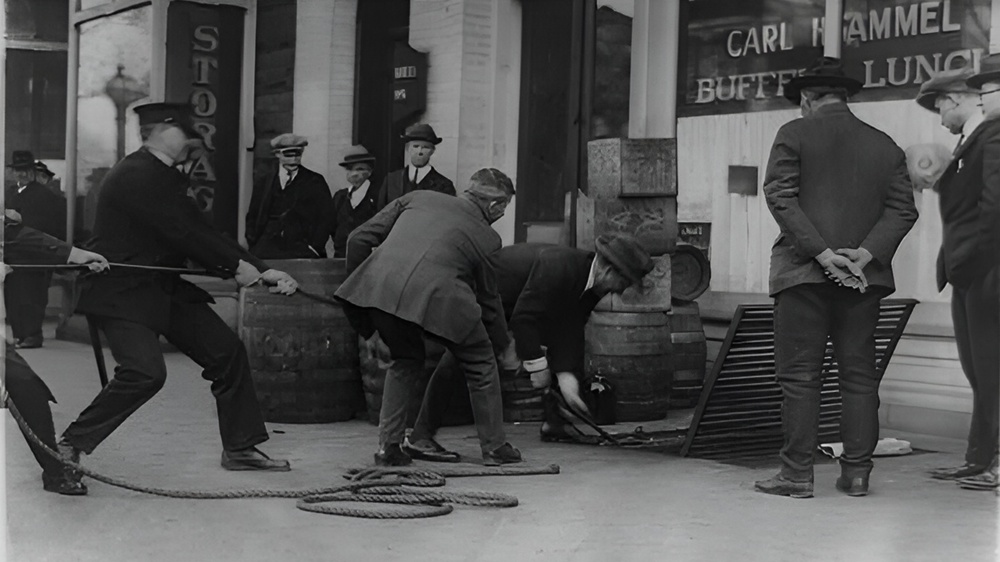
Police officers in Washington, D.C., during a raid on one of the city’s dining establishments. This photo was taken on April 25, 1923.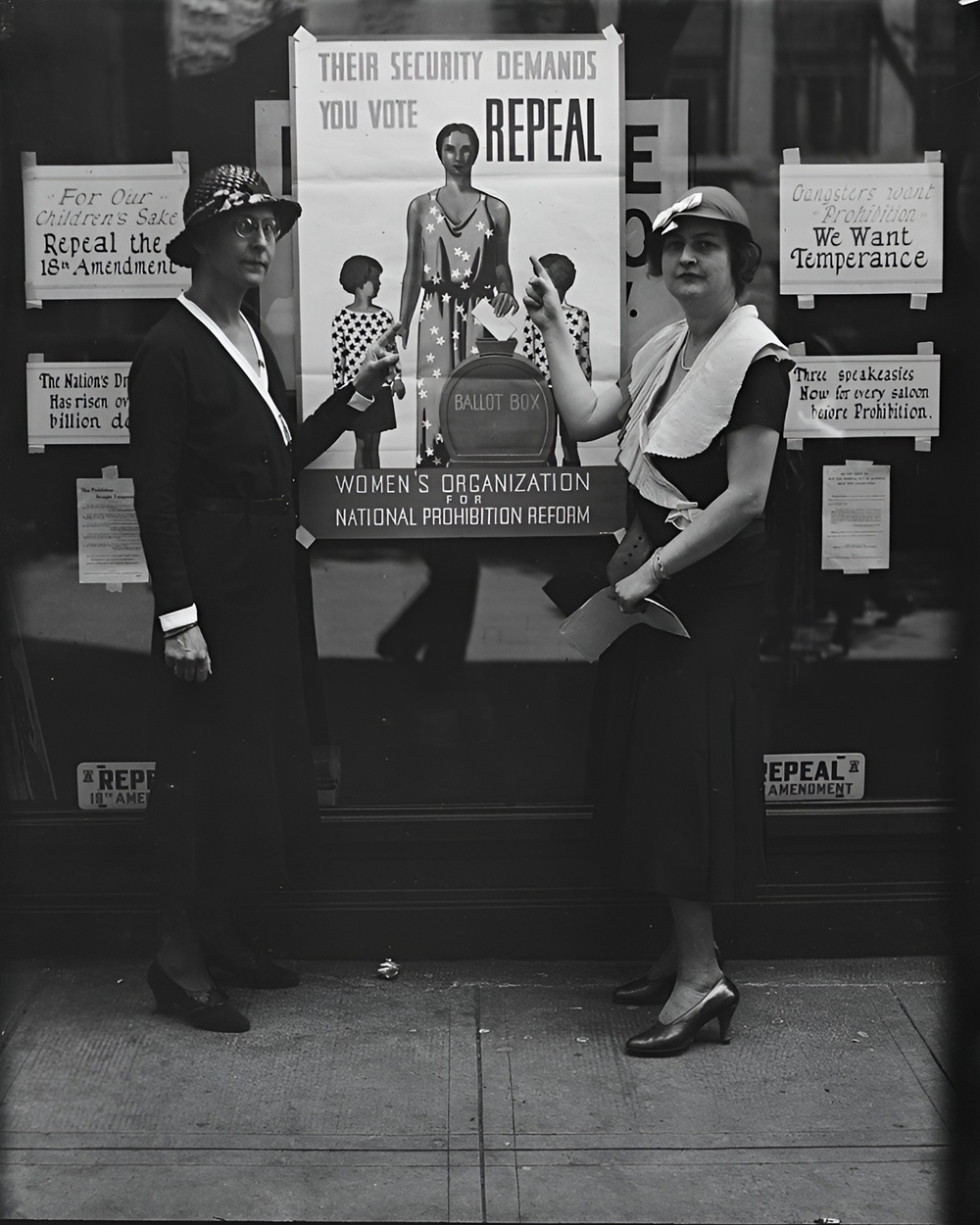
This 1932 photo shows women from the National Prohibition Reform Organization, which advocated for a constitutional amendment to end Prohibition.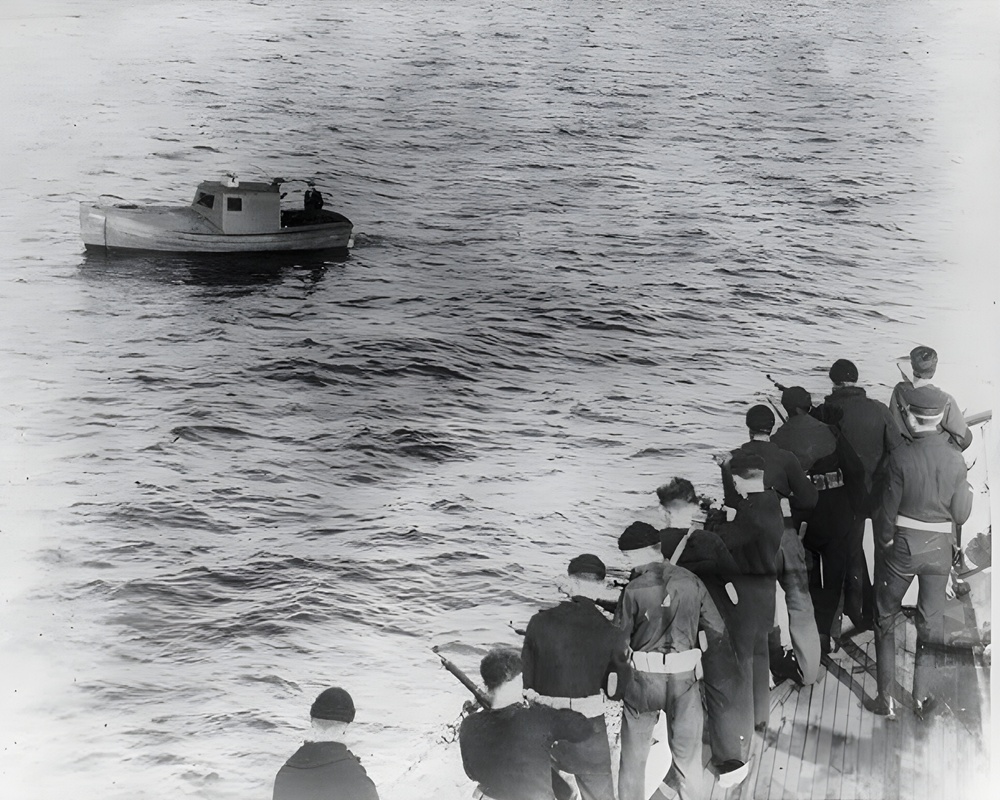
Members of the U.S. Coast Guard, armed with rifles, monitor a ship smuggling rum into the United States. This photo was taken around 1924.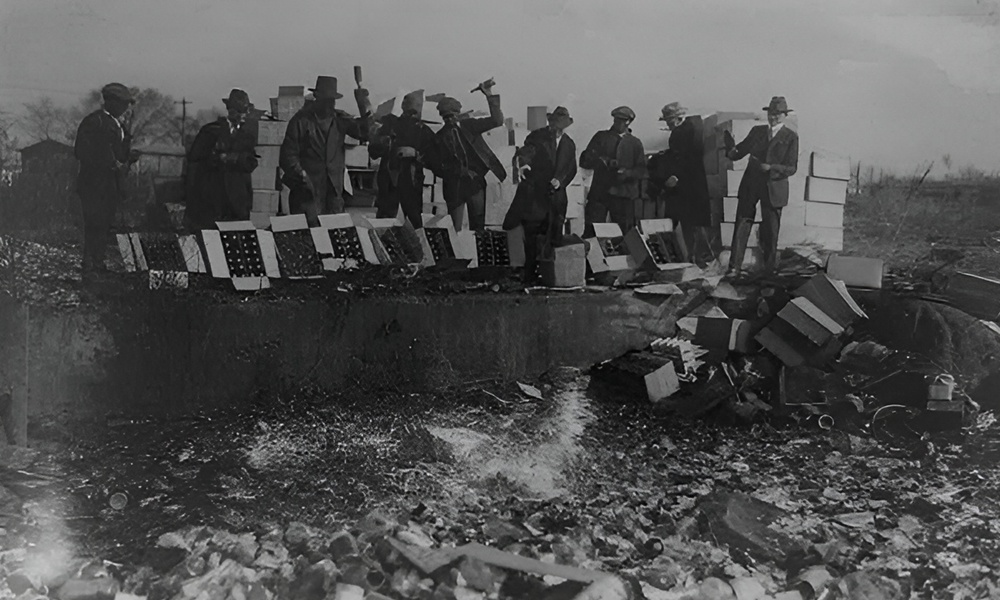
Men at a Washington, D.C., dump destroy an illegal shipment of 18,000 bottles of beer from Philadelphia. This photo was taken on November 20, 1923.

 10 Best Photo Places in the USA
10 Best Photo Places in the USA


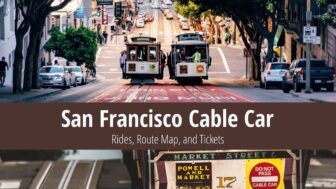

Contribute with Your Question or Personal Experience